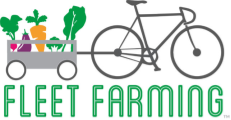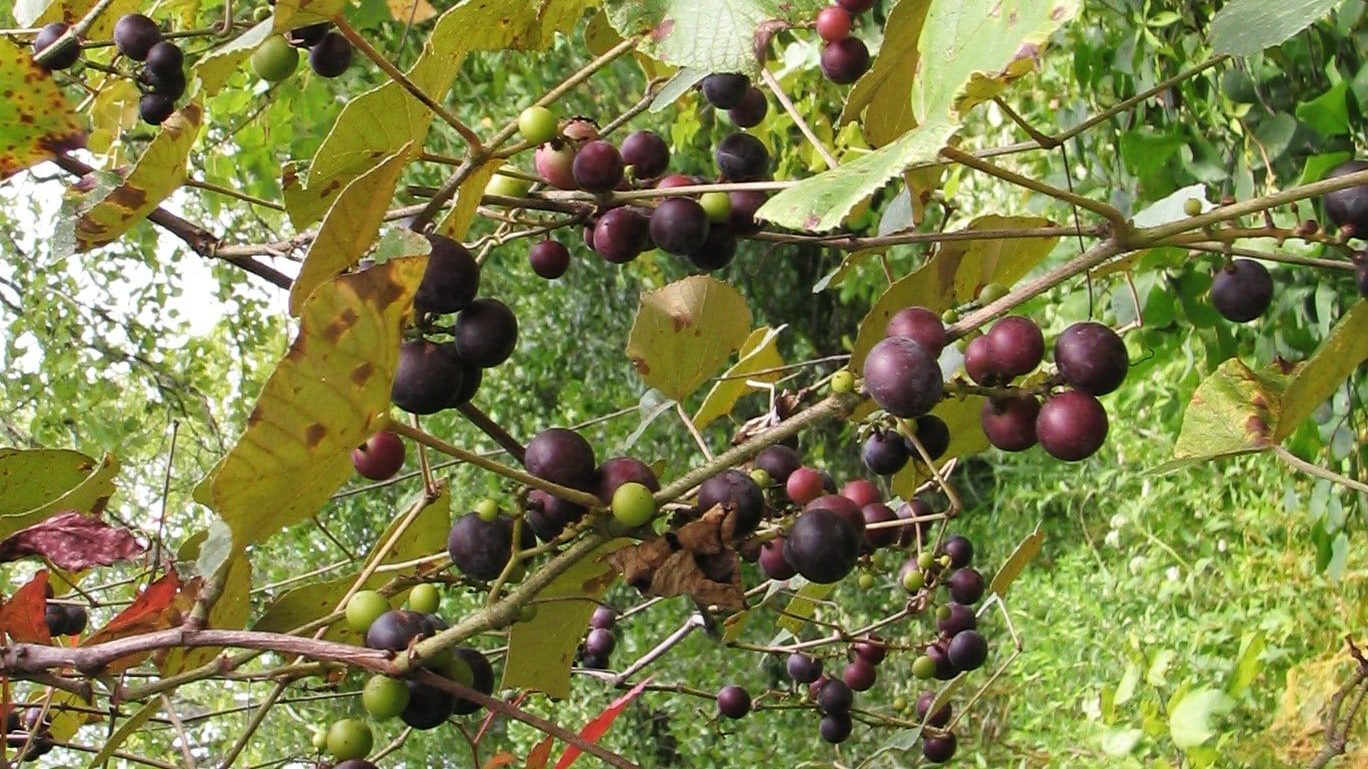Little did you know, but Florida harbors a variety of edible wild plants that may be in your very own backyard! Many people identify plants as “weeds” when they actually may be medicinal edible plants. It is crucial to learn and become aware of our environment and identify native plant species to further preserve our indigenous plants. In our grocery-dependent culture, it is especially necessary to take advantage of the resources around oneself, in case of natural disasters or lack of food availability – even for fun!
For Your Own Safety
Wild plants can be found in uncultivated places, maybe in your yard, and alongside trails. Nevertheless, before traversing out to the great outdoors to forage your goodies, there are some precautions you must take before consuming them. Many people have incorrectly identified a plant for another exposing them to poison, sickness or nausea. It is important that foragers acquaint themselves first and foremost with the Universal Edibility Test. (Test at your own risk)
It also important to think about the location of the plant as it can affect its quality and even pose as a hazard. If it is found near roadways plants are often coated with pollution and those found near farms could be infected with chemicals. If the plant is found near waterways, it is important the plant is washed thoroughly to prevent ingestion of microscopic parasites. Other than that, get out there and have some fun foraging for goodies with knowledge as your guide!
#1 Kumquat (Fortunella margarita)
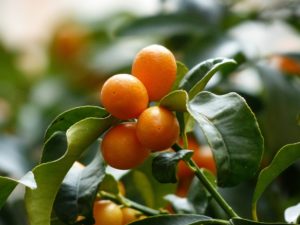

The kumquat tree, also known as Nagami is a small gem of the citrus family found all over Florida. The name kumquat in chinese actually means, “Gold orange” due to the color of its striking fruit. It is usually found in disturbed areas and sandy soils and are ripe for the picking around winter time.
Kumquats can be eaten whole, made into salads, into preserves, marmalade, incorporated into cakes, and even infused into vodka. An interesting fact about kumquats is that it’s the only citrus you can consume with skin and all. These citrus gems contain a rich supply of vitamin C, are high in antioxidants, supports healthy immune function, and may even help combat obesity.1
#2 Blackberries (Rubus spp.)
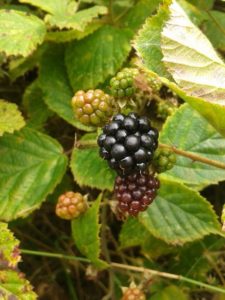

Gathering blackberries might pose to be a difficult task as it has its perfect defenses of thorns and spiky leaves. This is a bush of several species of blackberries found in Florida, but they all look similar, and have the same thorny and spiky characteristics. Blackberries are best picked in spring and are typically found in sandhills, woods, wet hammocks, and even along pond edges throughout Florida.
They have many uses where the berries can be eaten fresh or implemented into a sorbet, jam, jelly, cobbler, juice, and even wine. Fresh or dried leaves can be brewed into teas and the tiny, young, fresh stems, before they get thorns can be added to salads. The uses for blackberries are without bounds. According to Healthline, they are found to be a great source of fiber, vitamin C, vitamin K, manganese, and helps support oral health and can even boost brain health.
#3 Muscadine Grapes (Vitis spp.)
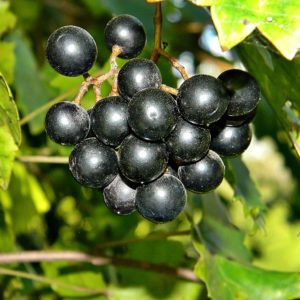

There are several species of grapes that occupy Florida. Muscadine, summer grape, and Florida grape can be found all over Florida.2 Grapes are gathered in spring for their leaves, in summer for their fruit, and also in fall. Muscadine grapes being the most common are typically found in well drained soils. It is characterized by its heart-shaped leaves with toothed edges that produce purplish black or even golden green fruit.
These aren’t exactly table grapes as they possess a thicker outer skin and sour flavor. They’re usually made into jams, jellies, and even pies. The USDA says muscadine grapes have been found to have significant amounts of the antioxidant resveratrol, fiber, and essential minerals.
#4 Purslane (Portulaca spp.)
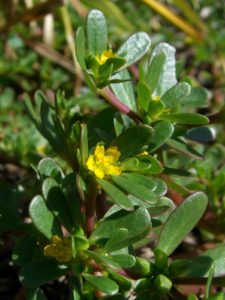
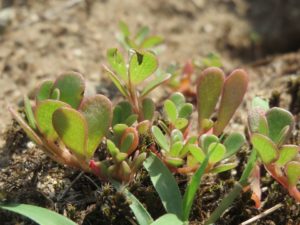
This plant is also known as rose moss, little hog weed, kiss-me-quick, little sun plants, and even pusley. I know these names are incredibly adorable and may be bring you even more joy just to know you can eat every single part of this weed. It is gathered from spring to fall throughout disturbed sites of Florida including beaches. Some species exhibit spatulate leaves while others have terete leaves.
Purslane can be consumed raw, cooked, or even pickled. They’re kind of mucilaginous like okra and are mildly acidic in flavor making it versatile to different flavorings. It has the reputed health benefits of having omega-3 fatty acids, iron, vitamin A, vitamin C, carotenoids, and B-complex vitamins.3
#5 Spiderwort (Tradescantia ohiensis)

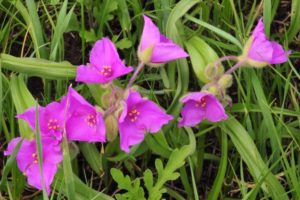
Spiderwort is a plant that exhibits beautiful blue, pink, or white flowers and strap-like leaves leaving you to question its name. The name was actually meant to describe its use, which is for the treatment of spider bites. The flowers and leaves are gathered in spring, summer, and fall. It is found in disturbed sites and moist to dry habitats in the northern half of Florida. A distinguishing characteristic of Spiderwort is that it has three symmetrical colored petals where its flowers open each morning and close by noon.
#6 Swamp Cabbage (Sabal palmetto) & Saw Palmetto (Serenoa rapens)
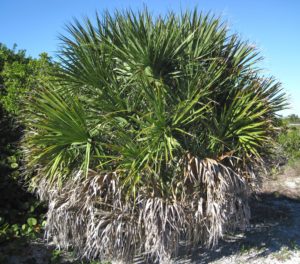

Cabbage palm and saw palmetto are two plants of eleven total species native here to Florida. They’re found in wet to dry habitats, year-round throughout all of Florida making it relatively easy to find. The heart is the only edible part of the plant where the terminal bud can be chopped out of the center of a palm tree and eaten raw or cooked. In spite of that, once the heart is chopped from a cabbage palm it kills the tree. Today, it is illegal to gather swamp cabbage. Don’t fret for the hearts and berries of its relative saw palmetto is used today and is just as delicious.
Saw palmetto is used as a dietary supplement for urinary symptoms associated with the prostate, chronic pelvic pain, decreased sex drive, migraine, and hair loss according to the NIH.
#7 Betony (Stachys floridana)

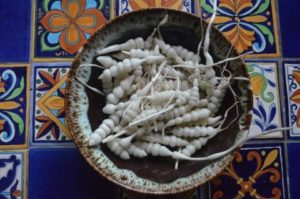
Also known as wild radishes or Florida hedge nettles, is an inconspicuous delicacy. At first glance they may look grub-like because of their white color and bumpy shape but, they’re unlike the red or sharp-tasting garden radishes. These are actually mild and crispy. The white grub-like tubers are the only parts that are edible where the weed is characterized by its pinkish, blue, or purplish flowers and leaves with scalloped edges. At its roots are where the radishes are found. The tubers are harvested in the spring time and are found in disturbed sites and flatwoods throughout Florida.
The tubers can be shaved over a salad or eaten straight out of the hand. Radishes are especially good at cleansing our liver, stomach, and even our blood.4
As you can see, these are the few of many indigenous plants found here in Florida, but it first starts with looking around and becoming knowledgeable with one’s surroundings. It is important to realize the bountiful benefits associated with these plants that grant us the ability live healthier and happier lives.
Want to find out if your local nursery has these plants? Feel free to visit Lukas Nursery, South Seminole Farm and Nursery, and Biosphere Nursery.
For more detailed information on a particular plant please feel free to visit Identify That Plant.
Citations:
-
-
-
-
-
https://www.wildbackpacker.com/wilderness-survival/articles/edible-wild-plants/
-
Lantz, Peggy Sias. Florida’s Edible Wild Plants A Guide To Collecting and Cooking. Seaside Publishing, 2014.
Photo credit:
https://pixabay.com/photos/kumquats-tree-branch-leaves-fruits-357894/
https://commons.wikimedia.org/wiki/File:Kumquat_tree_near_Shin-Toyotsu_Station.jpg
https://www.maxpixel.net/Berries-Blackberries-Bush-Blackberry-Fruit-891582
https://upload.wikimedia.org/wikipedia/commons/2/23/London_-_blackberry_bushes_at_Muswell_Hill.jpg
https://www.flickr.com/photos/pondapple/6003368320
https://www.publicdomainpictures.net/en/view-image.php?image=55594&picture=muscadine-grape-vine
https://upload.wikimedia.org/wikipedia/commons/e/e9/Spiderwort_Blue_Flower_2.JPG
https://upload.wikimedia.org/wikipedia/commons/0/0c/Stachys_floridana.jpg
https://www.holisticlivingschool.org/floridas-radish-betony/
